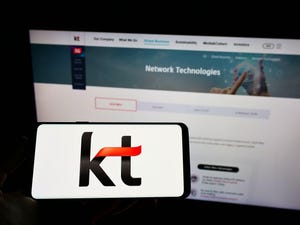China Telecom Guangdong and Huawei Complete China's First Commercial Continuous Deployment of 2.1 GHz 8T8R + 3.5 GHz 64T64R Dual-Layer Network for Urban Villages
China Telecom Guangdong and Huawei achieved a new milestone in improving mobile network coverage in urban villages by deploying China's first 2.1 GHz 8T8R + 3.5 GHz 64T64R dual-layer network at Xixiang Service Center, Bao'an District, Shenzhen. #Sponsored
November 10, 2023

China Telecom Guangdong and Huawei achieved a new milestone in improving mobile network coverage in urban villages by deploying China's first 2.1 GHz 8T8R + 3.5 GHz 64T64R dual-layer network at Xixiang Service Center, Bao'an District, Shenzhen. Field tests have shown that adding 2.1 GHz 8T8R to existing 3.5 GHz 64T64R sites in urban villages can increase coverage by 89.0%, contributing 5G traffic ratio increase by 12.9% to reach 68.9%. Now, 38.5% more users are able to stay on 5G, helping produce 39.9% higher 5G traffic and 12.2% higher total traffic. Ultimately, this means more urban village residents can enjoy high-speed and stable 5G network services at home.

Although 3.5 GHz coverage is aligned with 4G coverage, there are still coverage holes in urban villages due to dense populations and complex building structures, resulting in slow 5G speed. Moreover, it is difficult to add new sites in areas that already suffer from dense deployments in order to increase coverage. According to the "Implementation Suggestions on Further Deepening Digital Government Reform and Construction" released by the Guangdong provincial government on June 26, 2023, Guangdong will lead the construction of a digital society, systematically deploy new-generation information infrastructure, promote the "one-network unified management" of city operations, and accelerate the construction of digital villages. China Telecom Guangdong has been actively exploring 5G network solutions for urban villages to address these needs.
China Telecom Guangdong opted in to overlaying 2.1 GHz 8T8R onto incumbent 3.5 GHz 64T64R to form dual coverage layers in urban village coverage. 2.1 GHz 8T8R employs cutting-edge technologies like multi-antenna, integrated high-gain array, smart beamforming, and precise and quick scanning to achieve efficient coverage. In addition, it leverages the joint calibration of RF modules and half-wavelength antenna arrays, as well as innovative channel convergence, to greatly improve spectral efficiency, mitigate interference-related issues, and reduce power consumption. This solution took home the GSMA GLOMO award for "Best Mobile Technology Breakthrough" and was listed in the "Guangdong Province Energy Saving Technology and Equipment (Product) Recommendation Catalogue", issued by the Guangdong Energy Bureau in July 2023, for its excellent performance in energy saving. By incorporating FDD+TDD carrier aggregation, Super Uplink, and other software features, the 2.1 GHz + 3.5 GHz combination is set to further enhance coverage and overall user experience.
Following the deployment of the 2.1 GHz 8T8R + 3.5 GHz 64T64R dual-layer network solution at the Xixiang Service Center, Bao'an District, Shenzhen, a test was conducted to evaluate its effect. Compared with the 3.5 GHz network alone, the solution was found to increase network coverage by 89.0%, uplink edge experience by 249.2%, 5G traffic ratio by 12.9% (68.9% overall), average number of 5G users by 38.5%, 5G traffic by 39.9%, and total traffic by 12.2%. The new network also offers an average 43.4Mbps downlink rate and 8.9Mbps uplink rate for edge users, meaning urban village residents can take advantage of 5G for the purposes of work, watching HD videos, and live streaming from home. This creates the 5G network infrastructure needed to build a digital community.
This is a pilot project of 2.1 GHz 8T8R + 3.5 GHz 64T64R dual-layer network deployment in urban villages. China Telecom Guangdong will continue to adhere to the "Implementation Suggestions" of Guangdong Province and promote the practice in other regions of the province with the aim of building digital communities and bridging the digital divide.
You May Also Like











